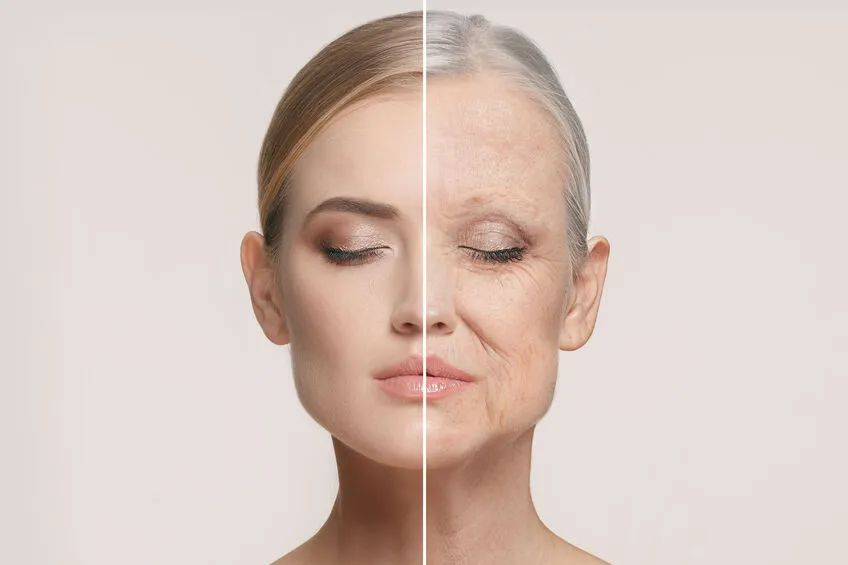In addition to carving wrinkles on our faces, the knife of time also creates loose and sagging skin on the face and neck. For beauty lovers who want to “freeze their age and reverse growth”, facial anti-aging is a must. To solve the problem of facial aging, traditional surgery and ablative skin reconstruction have good results, but they are invasive treatments; in non-invasive treatments, injections of fillers such as botulinum toxin and hyaluronic acid are currently widely used, but they can only treat dynamic wrinkles and volume loss, and have almost no effect on skin tightening and lifting. In addition, there are intense pulsed light, non-ablative laser and radiofrequency treatments, which rely on thermal damage and tissue healing response to work, but they are limited in treatment depth and cannot reach the ideal depth for treating skin sagging and rejuvenation (that is, reaching the superficial aponeurosis system and platysma muscle). If you want to use non-invasive treatment to effectively solve the problem of facial and neck sagging, the popular beauty ultrasonic knife in recent years may be a good choice. It can reach the subcutaneous superficial aponeurosis system and platysma muscle to achieve the purpose of non-invasive treatment of skin sagging and wrinkles.
How does beauty ultrasound knife work?
Everyone has heard of ultrasound examinations, but few people may know that ultrasound has been used to treat diseases for decades. For example, high-intensity focused ultrasound (HIFU) under the guidance of magnetic resonance imaging (MRI) to treat uterine fibroids was approved by the US Food and Drug Administration (FDA) in 2004. In addition, research on high-intensity focused ultrasound to treat benign prostatic hyperplasia and various malignant tumors is also underway. The beauty ultrasound knife technology in the medical beauty field was approved by the US FDA for eyebrow lifting as early as 2009 (the product name is Ultherapy), and later expanded its indications in 2012 and 2014, and was approved for neck skin lifting and treatment of chest wrinkles respectively.
Unlike high-intensity focused ultrasound for tumor treatment, this ultrasonic knife technology uses micro-focused ultrasound (MFU) to treat the skin with much lower energy. It does not need to use thermal effects and cavitation to destroy tissues. It only uses the thermal effect of ultrasound to achieve the purpose of treating skin sagging and wrinkles through shorter pulse widths, higher frequencies and lower energy.
In this process, the focused beam of ultrasound energy can penetrate the skin (but not damage the skin) to reach the subcutaneous tissue (such as the superficial aponeurosis system), and the temperature around the focal point rises instantly to 60-65°C, causing collagen denaturation and contraction. This process will produce a thermal damage area, but the thermal damage range is limited to the focus of 1-1.5 mm³, and the surrounding unfocused energy is not enough to cause thermal damage to the tissue.
48 hours to 10 weeks after treatment, inflammation will also stimulate the regeneration reaction of the thermal coagulation area to continue, continuously generating new collagen and elastin, thereby non-invasively tightening and lifting the sagging face and neck skin. After 10 weeks of treatment, the new collagen will completely replace the original collagen in the thermally damaged area, further tightening and lifting the skin during the continuous remodeling phase, which can last up to one year. Compared with laser treatment, ultrasound is not absorbed by melanin, so the incidence of pigmentation after treatment is significantly lower than that of laser treatment; Compared with radiofrequency treatment, ultrasonic scalpel can accurately locate energy in the dermis and below without damaging the epidermis, so the need for skin cooling is avoided. In addition, the ultrasonic scalpel instrument probe has different parameter combinations to meet different treatment requirements. Probes with deeper treatment depth can be used for cheeks and chins with deeper tissues; probes with shallow treatment depth can be used for skin around the eye sockets.
What is the effect of beauty ultrasound knife treatment?
A study of 70 patients treated with micro-focused ultrasound on their necks, and quantitative evaluation showed that 72.9% of the participants had a significant increase of 20 cm² in the submental (under the chin) area. Comparing photos taken before and 3 months after treatment, third-party evaluations showed that 68.6% of the participants had significant improvements in their chin and neck, and 67% of the participants believed that their facial and neck appearance had improved.
Another study analyzed 93 patients after treatment of the mandible and neck and found that micro-focused ultrasound double-depth treatment can effectively tighten and lift cheek tissue, reshape the chin, and improve skin laxity in the chin area. 90 days after treatment, quantitative evaluation showed that skin laxity improved by 63.6%, and 65.6% of patients believed that their skin laxity in the lower part of their face and neck had improved.
However, beauty ultrasound is not a panacea. Because skin aging involves many aspects such as collagen decomposition, subcutaneous fat redistribution, and remodeling after bone resorption, it is not a single treatment that can solve all of them.
Therefore, for some patients, doctors generally recommend combined treatment with intense pulsed light (LPL), 3D poly L-lactic acid (PLLA) and ultrasonic scalpel.
Who is suitable for using beauty ultrasound knife?
Younger patients (30-49 years old) with mild to moderate skin and soft tissue sagging who have normal wound healing ability are more suitable for cosmetic ultrasound knife treatment. Especially for patients with body mass index (BMI) <30 kg/m2, the treatment effect is better.
Compared with the 30-49 age group, the 50-59 age group has the second best effect, while the 24-29 age group is too young and has less collagen loss, so the effect is not obvious.
For people who are too old, have a large area of photoaging that causes severe skin sagging and sagging, and are fatter, ultrasound knife is not a suitable choice. They may need a single high-energy treatment or multiple more frequent treatments. Surgery is recommended for severe cases.
Generally speaking, it takes 12-18 months to wait for the next treatment after ultrasound knife treatment, so that the effect can be maintained for a long time. However, this frequency should also be adjusted according to age. For example, for very young patients or those seeking early intervention, the treatment interval may be extended to 24 months; while older patients (over 50 years old) may need treatment every 12 months.
Absolute contraindications for cosmetic ultrasound knife include: infection and open lesions in the target treatment area, severe active or cystic acne, and active metal implants (such as pacemakers or defibrillators placed in the treatment area). Under no circumstances should these people undergo ultrasound knife treatment.
Relative contraindications include: keloids, implants and permanent dermal fillers; factors that may change or affect wound healing (such as smoking). In some cases, these people can undergo ultrasound knife, but they need to be strictly evaluated by the doctor before deciding.
Some people ask, is the beauty ultrasound knife very painful?
A small sample survey shows that the pain of microfocused ultrasound treatment is no more obvious than that of pulsed dye laser or radiofrequency skin tightening devices.
A study of 49 Chinese patients treated the face without oral analgesics and local anesthetics. The average pain score of the patients was 7.35 points (out of 10 points), and the forehead was the most sensitive. Some studies have reported that if local anesthetics are used during treatment, there is only less or mild pain (the average pain score is 3 to 4 points, out of 10 points).
At present, there are many ways to reduce pain during treatment, including the use of analgesics, sedatives, local anesthesia or dispersed cooling. The commonly used method is to apply local anesthetic cream to the treatment area 60 minutes before treatment, oral ibuprofen, etc.
Other related adverse reactions include temporary erythema, edema, and occasional bruises. Uncommon adverse reactions include post-inflammatory pigmentation, muscle weakness, transient numbness, wheals, and nerve damage, which are rarer. Most of these reactions are caused by improper operation techniques. Most adverse reactions resolve spontaneously within 1-3 months without intervention.
Finally, I would like to remind everyone that you must go to a qualified and reputable regular medical institution for medical beauty projects, identify regular medical beauty equipment, and avoid choosing institutions with incomplete qualifications and products of unknown origin. In particular, focused ultrasound instruments that increase local temperature may cause burns and damage to facial nerves if they are not operated properly.








